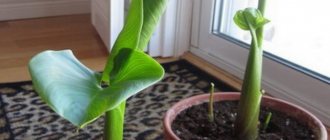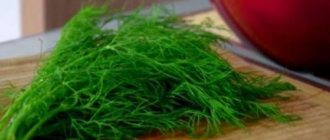Carrots are one of the most popular garden crops.
It is usually not planted very much, but it is definitely present in almost every garden. Dear readers!
For you, we have created communities on social networks in which useful articles and interesting ideas are published several times a day! Subscribe and receive useful content in a convenient format! Carrots are harvested in the fall. At the same time, they provide storage conditions for the vegetable, which is actually quite finicky.
In this article we will figure out the conditions under which to store carrots, and what storage methods generally exist.
When to store carrots
The harvest must be harvested before the first frost. This is because the root vegetables will become bitter. In addition, exposure to cold negatively affects the shelf life of vegetables.
INTERESTING. It is recommended to harvest carrots in the evening, since during the day they accumulate sugar in the tissues. Therefore, due to evening harvesting, the collected root vegetables will be sweeter.
Dig carrots naturally on a dry day. If the soil is loose, then you can pull out the tops, but if you have not loosened the soil, then it is better to dig in so that the carrots do not break.
Washing root vegetables
How to store washed carrots? Washed carrots must be dried very well ; if you send wet vegetables for storage, they will quickly rot, and they will also develop bacteria and mold. Therefore, spread the root vegetables in one layer in the sun. However, it is important not to overdry the crop; such carrots will quickly become weathered and lose their taste properties.
To disinfect, you can wash the carrots not with running water, but with a weak solution of manganese or add a few drops of alcohol . After treatment with the solution, it is better to rinse the carrots with plain water. Wash vegetables using gentle movements, being careful not to damage the skin. It is better not to use sponges and other traumatic materials.
We wrote about whether it is possible to wash carrots before storing them here, and about the best way to store vegetables—clean or dirty—read here.
Another way to store carrots at home in this video:
Storage conditions
In order for carrots to last as long as possible, maintaining their marketable appearance and taste, they must be provided with appropriate storage conditions.
Below are the main parameters.
Humidity
During the storage process of carrots, a high level of moisture evaporation will lead to a decrease in the weight of root crops, their wilting, an increase in the process of decomposition of beneficial microelements and a decrease in resistance to pathogenic microorganisms. That is why the room in which the root crop is stored must be very humid. The optimal humidity level is from 90 to 95%.
Storage temperature
Again, to avoid excessive evaporation of water, the ideal temperature for storing carrots is 0-1 degrees.
It makes no sense to store root vegetables in conditions of low or high temperature. It will spoil very quickly.
Other conditions
The carrots must be whole and free from any defects or damage. Any seemingly insignificant temperature fluctuations can change the taste of carrots, so they must be avoided.
IMPORTANT! One of the requirements that must be approached with the greatest seriousness is the balance of carbon dioxide and oxygen. If the balance is not correct, bacteria will either grow or the carrots will die.
Something went wrong
The worst thing that can happen to a vegetable is spoilage. Most often, there is only one reason why carrots rot during storage, turn black, sprout or become soft - this is improper storage. It can be caused either by improper operation of the refrigerator or freezer, or by the carelessness of the owners.
Once every one to two weeks, carrots should be inspected for droplets inside the package. Their occurrence indicates the presence of carbon dioxide - in this case, the root crop must be removed, dried and packaged again. Most often, this problem occurs only in the refrigerator, but it can also happen with the freezer if it malfunctions.
How long is it stored?
How long can carrots be stored? A good question to which there is no clear answer. It all depends on the storage conditions and the way you will store the vegetable.
- Korean carrots are infused for 12 hours, then their shelf life in the refrigerator is no more than 2 weeks;
- Boiled carrots in the refrigerator will no longer seem appetizing after three days;
- Carrot juice quickly loses its beneficial properties during any storage. It can only be stored for a few hours, after which the juice will slowly but surely deteriorate.
- Plain carrots can easily be stored inside the refrigerator and remain fresh for an average of three months.
- Root vegetables stored with sand, clay, and sawdust can remain fresh for 3-12 months.
Peculiarities
The method depends on the type of carrot: fresh or cooked, whether it is washed, and for what purpose it will be used. A modern refrigerator is suitable for most of the above cases, since it has different compartments and knows at what temperature it is worth storing food:
- for cooked products at +2–6°C;
- fresh fruits and vegetables with a temperature of +0–3°C;
- for freezing at -8–20°C.
If you place the root crop in the right compartment, this will ensure its best storage and maximum retention of nutrients.
How to prepare for saving?
A few words about preparing carrots for storage:
The garden bed should not be watered several days before harvesting;- When digging, only blunt pitchforks can be used;
- You cannot clean dirt from vegetables by hitting them against each other;
- After digging the carrots, they need to be cooled at a temperature of 1.5 degrees for 1-2 days.
Next, you need to trim the tops as close to the head of the root crop as possible, and then lay them out to dry. The next step is to sort the suitable carrots from the damaged or rotten ones. Now you can store the root crop.
Storage methods
In the cellar
Before storing carrots, you need to prepare the room:
- Ventilate. It is necessary to keep the basement cool and odorless.
- Disinfect. Here you need to take a 2% bleach solution, taken according to the proportion: 1 kg/110-140 m2 of the object being disinfected
- Whitewash the cellar walls. A couple of weeks after disinfection, you need to mix 2-3 kilograms of hydrated lime with 10 liters of water, and whitewash with this solution (0.5 l/m2).
Next you need to select a suitable copy. It must not contain any defects or damage. If this requirement is not met, then the carrots are unsuitable for use, since there is a high risk that unwanted microorganisms will get inside.
IMPORTANT! It is unacceptable to tear off the tops with your own hands. It must be removed with a sharp knife, leaving 2-3 millimeters.
The harvest can be stored in the basement as follows:
- In onion/garlic peel;
- With sawdust;
- In sand;
- In polyethylene bags;
- In enamel pots;
- In the moss;
- In clay;
- In boxes.
In a refrigerator
The first step is to dry the carrots from excess liquid either from washing or from the soil.
Prepared carrots are dry to the touch and monochromatic. It must be remembered that it is not recommended to put peeled carrots in refrigerators. Indeed, in this state, it very quickly loses most of the beneficial microelements and moisture.
However, there is one great way to preserve carrots for a short time. It is lowered into water and placed in the main compartment of the refrigerator. Then people change the water, stretching the freshness of the carrots for a week.
Grated carrots spoil even more quickly than regular peeled ones. When storing it, it must be placed in a glass jar, plastic container or polyethylene bag. The product will be unusable after 10-14 days.
Peeled carrots, inside a vacuum bag, or wrapped in cling film will not lose liquid and, therefore, microelements. The main thing is that the wrapper fits the carrots as tightly as possible. In some cases, when there is too much moisture, the root crop can be wrapped in paper. But then, you will always have to monitor the quality of the workpiece and change it if necessary.
ATTENTION! The location of the carrots is also significant. The lower the carrots are packed in the refrigerator, the better they will be preserved. It is also important that if you bought a root crop with the tops trimmed, then you need to cleanly cut off the tearing area.
In the freezer
If you use the vegetable for cooking dishes: soups, seasonings, meat, then it makes sense to freeze some carrots. The root vegetable retains all its beneficial properties. Plus, you won't have to defrost anything. The required amount is chopped off with a knife and sent, for example, to soup.
So, the carrots need to be chopped. The easiest way is to use a grater. Next, the shredder is distributed into plastic bags and sent to the freezer.
You can freeze it on a cutting board, and only then sort it into separate containers and bags.
Choose a method that is convenient for you.
The advantage of this storage method is that the carrots do not take up much space and are already ready to eat.
In sand
Sandbox storage is popular among gardeners for a reason. Sand prevents excessive evaporation of water in the root crop, the development of diseases, and creates a stable temperature. The root crop remains fresh after 7-9 months. For this method you will need:
- Sand;
- Box(es);
- Water.
This method will work if the sand is wet. Humidification proportion: 1 l. water/bucket of sand. The resulting sand must be poured into boxes in a layer of 3 to 5 centimeters, then the crop is laid so that individual specimens do not touch each other. All this can be covered with new and new sand-carrot layers.
In the sawdust
Storage with sawdust is another suitable preservation method. The substances contained in the needles will prevent root crops from germinating or unwanted microorganisms from penetrating the vegetables. Root vegetables preserved with sawdust remain fresh after 12 months.
This method requires boxes and pine sawdust. The technique of preservation in sawdust differs from the sand method only in that the sawdust does not need to be moistened.
In clay
A thin clay layer will prevent the carrots from wilting and becoming infected. With this method, carrots can be stored for up to a year. There are 2 options for how to process it before saving.
In order to store vegetables in this way, you will need the following components:
- Clay;
- Cardboard or wooden boxes;
- Polyethylene film;
- Water;
- Garlic if desired.
1 option
Half a bucket of clay is filled with water. A day later, the mass is mixed and poured again. During the next 3-4 days, the clay will be under a 2-3 centimeter layer of water, and before storage it will become similar in thickness to sour cream. Now films are laid on the bottoms of the boxes, on which the carrots are laid out. Then it is filled with clay. The layers continue all the way to the ends of the drawers.
Option 2
Here you need to use clay and, if desired, garlic mash. Clay ones are prepared by diluting the clay with water in such a way that the mass does not flow away from the carrots. To prepare garlic, you need to mix the mass obtained using a meat grinder from a glass of garlic with 2 liters. water.
Unwashed carrots are placed in a garlic or clay mash, after which they are dried with the help of the wind. Dried carrots are placed either in a wooden box or cardboard boxes.
In the garden
This is a rather unusual method that is rarely used. Nevertheless, it exists, and we will tell you about it.
To store carrots in the garden, you need to remove the tops from the vegetable. The area is also weeded, removing all remnants of plants that may begin to rot.
Next, the carrots are buried.
The bed is sprinkled with wet coarse sand, then covered with a film on which humus, peat, leaves or sawdust are poured. The last layer is either roofing felt or film.
In plastic bags
Storage in a polyethylene bag has its own peculiarity. When using bags, it is necessary to ensure that the carrots receive enough oxygen.
Whether open or closed with ventilation, the bag will retain enough carbon dioxide to kill bacteria. In any of the closed bags, the gas released will not be able to escape and the carrot will die. The bag keeps carrots fresh for 2-3 months.
The humidity in such bags is 96-98%, which is why if drops of water appear on their inside, you need to sprinkle fluff lime near the carrots.
In boxes
Or perhaps not use sand or sawdust at all. If you put root vegetables in wooden or plastic boxes 10-15cm from the walls, then carrots can also be preserved for a very long time (after 4-7 months they will still be fresh).
The boxes are placed on a small pallet; there should be no more than 20 kilograms of carrots inside. From time to time you need to check the condition of the vegetables and turn them over.
Which varieties can be kept fresh for a long time?
For long-term preservation of these vegetables, late-ripening varieties are best suited.
Among the middle categories there are also varieties of carrots that are subject to long-term storage, but many of them, as a rule, do not have any taste.
Late-ripening categories include those that ripen 115-135 days after the appearance of seedlings. These varieties are cold-resistant, not so susceptible to diseases, and therefore their preservation is better.
Under favorable conditions, late-ripening carrots are stored until July, and do not lose their taste. Typically, these categories of vegetables have oblong, pointed shapes. The most popular and in demand are the following varieties of carrots:
Queen of Autumn
An excellent category from Altai breeders, it’s not for nothing that they called it that.
Root crops grown on fertile soil, as a rule, exceed traditional characteristics, since the yield is about 9 kg/m2, weight – 240 g, and length – 25 cm.
Dolyanka
Representative from Polish breeders, preserves well until June . If the soil is infested with carrot fly larvae, this variety would be a good choice for the next planting. The fruits are medium, weight - from 140 g.
Flaccoro
It attracts the attention of gardeners with its productivity (from 8.5 kg/m2), has long root crops up to 27 cm and weighs about 200 grams.
Mid-season varieties for long-term storage include:
Moscow winter
High-yielding category, can retain its qualities for up to 10 months .
Shantanay
Despite the average ripeness, the fruits have a sweet taste and can be stored well for 8-10 months.
Unusual ways
There are very unexpected options for storing vegetables.
In onion skins
This method works exactly the same as with pine sawdust. Rotting does not occur due to substances in the peels of garlic and onions. Carrots with peels are poured in layers to the edge of the boxes. The width of the husk layer should reach 3-4 centimeters.
In paraffin
Here you need to dip a clean and dry carrot into a container with hot paraffin and a small amount of beeswax. This mixture will be stored for up to 5 months at 1 degree Celsius. This method has been known for quite some time, so you can be almost sure that it will work.
In the moss
Previously dried individual carrots should be kept cool for 24 hours, then, alternating layers, add sphagnum moss to the carrots. This type of moss has various properties that preserve vegetables and is able to retain the required oxygen. But the main feature of moss is its lightness compared to other fillers.
In pans
This method requires a large enamel-lined pan. The carrots must be thoroughly washed, the tops cut off, and the vegetable dried. Next, the carrot is placed vertically inside and covered with some material. Now it can be stored for several months.
In the chalk
Chalk has the ability to create a slightly alkaline environment, inhibiting the onset of decay and the appearance of pathogens. To store 10 kilograms of carrots, it can be powdered with 150-200g. chalk powder. It is also possible to dilute a 30% chalk solution and treat the carrots in it, after drying.
In lime
Another unusual way is to store carrots in lime.
You need slaked lime, and it needs to be diluted to the consistency of sour cream, that is, about 1 to 10.
IMPORTANT! Before storing, each root vegetable must be thoroughly dried.
Dip each carrot in lime and place on plastic wrap or a baking sheet. Next, the vegetables need to be dried in a room with good air circulation. The shelf life under such conditions is no more than a couple of days.
After complete drying, the carrots are stored in a tightly closed box or box.
The advantage of this method is that the crop does not rot or wither.
Some tips
Over the years, gardeners and housewives have developed their own tricks, including those related to harvest storage. We decided to share some subtleties:
- When harvesting, it is better to trim the tops within an hour: they draw moisture from the carrots and they wither faster.
- You can’t wash carrots, as they won’t store as well this way. By the way, for this reason, it is not advisable to buy washed carrots in supermarkets, especially those packaged in large bags.
- There is no need to store different varieties in one bag or in one box: the shelf life of such carrots is different, some will begin to deteriorate faster and “infect” healthy ones with rot.
- According to statistics, long cone-shaped carrots are best stored, not too small, but not large either.
- Instead of sand, carrots can be covered with moss. It draws moisture well and prevents root crops from rotting.
You can also leave the carrots in the ground, covering the top of the bed with sand in a layer of up to 10 cm. Instead of sand, you can use fallen leaves, and cover everything on top with plastic film so that the insulation does not blow away in the wind. True, in winter some rodent may take a fancy to the garden bed, so the method is not the most reliable and can only be used as a last resort.
Can it be washed before storing?
You can store carrots unwashed in regular nets. Many summer residents do this.
But washed vegetables have their advantages:
- The root crop is deprived of many harmful microorganisms.
- Possible mechanical damage becomes visible.
- Traces of rot and disease can be easily seen.
- It moves better during storage.
However, this method of storing crops is not without some disadvantages:
- The vegetable becomes much more demanding of humidity and room temperature.
- Drying takes longer.
Why do carrots rot during storage?
It seems that storing carrots is very simple. However, it often happens that the vegetable begins to rot. Let's look at the main causes of damage.
- Sick carrots were sent for storage;
- The room temperature is unstable;
- Lack or excess of moisture;
- Inaccurate transportation, due to which damage appears on root crops;
- Carrots are stored in contact with other vegetables and fruits (this mainly applies to apples).
Common mistakes
To avoid spoilage of carrots, you need to familiarize yourself with common mistakes and monitor their absence:
- People don't look at condensation. Drops on the inside are an indicator of a high concentration of carbon dioxide, which destroys and spoils the carrots.
- Carrots come into contact with other fruits. Different plants emit different substances; special attention should be paid to apples, which emit ethylene, which spoils the taste of carrots.
- People don't look at the variety of carrots. Among the hardy varieties are O, “Vita Longa”, “Vitaminnaya” and “Chantane”. “Paris Carotel” and “Amsterdam” are recognized as quickly spoiling.
- In winter, people save unripe carrots. This will quickly become spoiled and unusable.
- Not enough space between individual root vegetables (in some cases). This way the vegetables will be stored terribly and spoil.
Answers to frequently asked questions
Can I store carrots damaged by carrot flies?
Yes, carrots affected by carrot flies can be stored, but only in processed form. Here you need to remove the damaged area and wait until it crusts over. But remember that this root vegetable will have a shelf life many times shorter.
Which type of carrots is better to store: soft or rough?
Each variety of vegetable has its own advantages. Tender varieties are tastier and more rich in vitamins, while rough varieties tolerate storage better. Therefore, usually the tender carrots are used first, but the rough ones are stored until spring.
Is it possible to store carrots on the balcony?
When there is no other option, then, of course, you will have to store it on the balcony. But you must understand that vegetables there will be subject to temperature changes (thaw, frost, thaw again).
All this has a negative effect on carrots. It is highly likely that the vegetable will begin to rot faster.
The balcony is suitable for storing a small amount of carrots. If you have several bags worth of harvest, then it is better to take care of storing it in a room with a constant temperature.
How to protect carrots from rodents?
Kanufera is considered one of the most effective remedies. She just needs to line the box, after which the rodents will not approach.
Shelf life of seeds
As well as how to preserve the harvest, it is important to know how to store carrot seeds and what their shelf life is. Experienced summer residents believe that 2 years can be considered the maximum period. But the best thing to do to increase germination is to use last year’s seeds.
To save seeds, you need to do the following:
For storage, carrot seeds should be carefully sorted from defective and rotten ones.- Then the seeds should be disinfected to get rid of harmful bacteria. This can be done using hot water - pour the seeds with water heated to 50 degrees, cover with a lid and leave for an hour.
- Next, you need to dry them very quickly and thoroughly, since the process of seed ripening ends if there is a complete absence of moisture, and pack them in bags or paper bags. Polyethylene should not be used for this; it restricts the flow of air.











